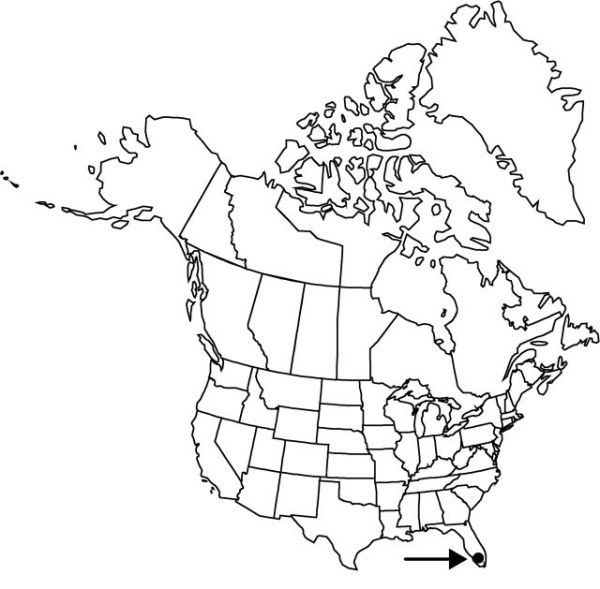Difference between revisions of "Epidendrum acunae"
Amer. Orchid Soc. Bull. 28: 358, figs. 1–4. 1959.
FNA>Volume Importer |
FNA>Volume Importer |
(No difference)
| |
Revision as of 19:30, 24 September 2019
Plants hanging, 50–160 cm. Roots basal or from proximal branches, 2–3 mm diam. Stems branched, sinuous, terete, main stem to 160 cm, leaves 100–120 mm × 12–22 mm; vegetative branches to 60 cm, leaves 58–110 × 10–20 mm; flowering branchlets 3–8 cm, leaves 20–60 × 9–13 mm, flowering branchlets produced from both main stem and vegetative branches. Leaves many, distributed throughout stems; petiole to 4 cm; blade narrowly lanceolate, 2-lobed, fleshy-leathery. Inflorescences distichous-imbricate; peduncle 1 cm; bracts 2–3, conduplicate, 8–18 mm. Flowers 1–3, not resupinate, simultaneous, brownish green; sepals spreading, lanceolate, abaxially keeled, many veined, 12–21 × 3–6 mm, apex acute; petals partly open, elliptic, many veined, 12–18 × 2.5–5 mm, apex obtuse to rounded; lip cordate, callus V-shaped, prolonged into central keel, 9–14 × 5–9 mm; column suffused with purple, 5 mm; clinandrium erose, short; anther obovate, 2-cleft; ovary 15–20 mm. Capsules ovoid, body 18–24 × 10–12 mm, tapered beak 5–6 mm.
Phenology: Flowering May–Jun.
Habitat: Epiphytic on main trunks of larger trees in Fahkahatchee Swamp
Elevation: 0–30 m
Distribution

Fla., Mexico, West Indies (Cuba), Central America.
Discussion
Epidendrum acunae, described from Cuba, was discovered in Florida in 1962, as a single population, and it has apparently become extirpated because of overcollecting (R. Sauleda, pers. comm.). Only one specimen from Florida has been found (Sauleda 942, FTG), of which a photograph of the live flower is at AMO, apart from the record in C. A. Luer (1972). The description has been prepared from Luer and from Cuban and Mexican material.
Selected References
None.